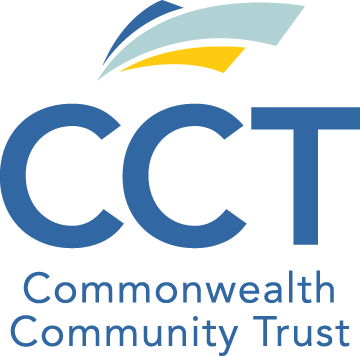Estate Planning for the Personal Injury Client: Understanding Disability Benefits
By Karen Dunivan Konvicka, J.D., Former Director of Client Services and General Counsel
Estate planning can encompass much more than taxes. When an injury attorney colleague asks about planning for the client’s settlement, be prepared to answer. The foremost issue is determining how it will affect the client’s public benefits, if any. If there are benefits to protect, there are planning opportunities; if not, the client may still need the protection of a trust. The immediate questions are: What type or types of benefits is the client is receiving? And will the settlement put these benefits in jeopardy? Perhaps the attorney has not considered benefits but is concerned that the client is incapacitated and will need the assets managed; or perhaps public benefits may be necessary in the
future.
How did the client receive benefits — through means-testing or due to work history? Medicaid, the means-tested public health benefit is available for people with disabilities who are also impoverished, which is defined as having less than $2,000 in resources and below 133% of the federal poverty income limit. Personal injury proceeds may not be taxable, but they are countable resources. Medicare, by contrast, is the earned health care coverage received by permanently disabled workers who have worked enough quarters to become eligible. In addition to health benefits, income benefits are available to the disabled. Supplemental Security Income (SSI) is a means-tested benefit just as Medicaid is, whereas Social Security Disability Income (SSDI) is earned income provided to the eligible disabled worker based on the amount withheld from earnings while working.
The Medicare Secondary Payor (MSP) Act, 42 U.S.C. §1395y, requires that an individual receiving compensation for an injury, must use that compensation for the injury related expenses. Medicare, therefore, becomes the secondary payor for these injury related expenses. The MSP has long been enforced for Workers’ Compensation awards, and Workers’ Compensation attorneys are well versed in the necessity for Medicare Set-Aside (MSA) accounts to manage the proper use and expenditure of the compensation. The Centers for Medicare and Medicaid Services (CMS) has been indicating that it will begin enforcing the MSP for liability cases in the near future. Some clients are eligible for both Medicare andMedicaid. Both can be protected, but not without some planning because an MSA is a countable resource. Adding additional complexity, many
plaintiffs are choosing to utilize a qualified assignment of a structured settlement to minimize the tax consequences of growth on the award, see 26 U.S.C. 104(a)(2) and 130. While providing important tax benefits to the client, structured settlements also have pitfalls to be avoided when public benefits are involved.
Special Needs Trusts to Protect Public Benefits
The courts have held that not considering and planning for the client’s means-tested government benefits can result in a legal malpractice claim, Grillo v. Pettiette et al., 96-145090-92 (96th Dist. Ct., Tarrant Cty., Texas), and Grillo v. Henry Cause, 96-167943- 96, (96th Dist. Ct., Tarrant Cty, Texas), or a breach of fiduciary duty or dereliction of duty if not considered by a fiduciary or denied by a court, Department of Social Services v. Saunders, 247 Conn. 686, 724 A.2d 1093 (1999).
Clients receiving Medicaid, which can come in the form of health insurance benefits, long-term care, and waiver programs for those with intellectual disabilities, family support, technology assistance, home and community- based care, etc., must be advised that receiving the settlement proceeds will endanger these benefits. In the case of waiver benefits, there are often long waiting periods before the individual
can receive these waivered benefits again if the client loses eligibility making the timing of the payout and the planning especially important. Creating and funding a special needs trust pursuant to 42 U.S.C. §1396p(d)(4) 1
will preserve these benefits.
Both stand-alone special needs trusts (SNTs) created under (d)(4)(A) and pooled special needs trusts (PSNTs) created under (d)(4)(C) are options to consider. When considering the stand-alone SNT, one must look at the choice of trustee. Banks and trust companies will agree to serve, but consider the cost benefit of these services given the size and value of the trust created. Many require minimum funding and fees can be steep. Family members may agree to serve as trustee, but while the family members usually have good intentions, they may not be equipped to monitor the disbursements for compliance with the complex federal regulations governing public entitlements. Mistakes can cause a period of ineligibility for Medicaid or a reduction in or loss of SSI benefits.
By contrast, PSNTs are administered by a non-profit organization, that works solely for the benefit of disabled individuals, and usually has great expertise in the administration of SNTs and the intricacies of Medicaid regulations and the Social Security Administration’s Program Operations Manual System (POMS). Assets in a PSNT are pooled for investment purposes, but each beneficiary has an individual sub-account, allowing investment and management fees to be less than stand-alone trusts. SNTs can be created by the individual, a parent, a grandparent, a guardian, or a court. Although PSNTs can be funded by those who are 65 and older (SNTs cannot), depending on the client’s state regulations, there may be a transfer penalty for funding the PSNT when 65 or older.
Finally, a stand-alone SNT must have a repayment provision that requires that the states providing medical services to the beneficiary must be paid back upon the death of the beneficiary. In contrast, the non-profit organization administering the PSNT is allowed to retain the remainder after the death of the beneficiary for the benefit of other people with disabilities. Some pooled trusts retain the remainders, some do not, and some have a hybrid approach. For example, Commonwealth Community Trust (CCT), only retains the remainder if the repayment amount is greater than the balance in the trust. When the repayment is less than remainder, CCT first reimburses the states’ Medicaid agencies, and then distributes to the successor beneficiaries. CCT never retains funds if the successor beneficiaries would have received the remainder otherwise.
Medicare Set-Asides Nested within the Special Needs Trust
In February 2017, and again in April 2017, CMS released transmittals 2 requiring Medicare Administrative Contractors (MACs) to deny payment for services related to or associated with an open Liability Medicare Set-Aside (LMSA) or No-Fault Medicare Set- Aside (NFMSA). It warned in these transmittals 3 that CMS will begin denying payment for items and services that should instead be paid by a primary payor such as an insurance company or third party by October of 2020. No transmittal has been released mandating these set-asides nor has a formal process for Liability Medicare Set-Asides been dictated, but the writing is on the wall. Early in 2020, CMS released another article reiterating its position that Medicare should not be billed until any payment from a primary payor has been exhausted. 4
Adding more planning requirements, an MSA is a countable resource for public benefits purposes and will jeopardize benefits such as Medicaid and SSI with only one possible exception. 5 Careful planning to nest the MSA in a SNT allows management of the set-aside portion of the funds and the remainder of the settlement proceeds, while protecting eligibility for means-tested benefits, and ensuring that injury-related expenses are covered.
Clients not receiving means-tested benefits may ask about self-administering the MSA. While the answer is yes, the recordkeeping and accounting can be complex. The account must be funded either with a lump sum from the settlement or with seed money and subsequent settlement annuity payments. The account must be an entirely separate interest-bearing checking or savings account with no co-mingling of non-MSA funds. Interest earned must also be used for medical expenses related to the injury suffered that would otherwise be covered by Medicare.
Meticulous records of the distributions and expenditures must be maintained. For liability MSAs, accounting is required when the account balance reaches zero while Workers’ Compensation cases have annual reporting requirements. Medicare will use this report to confirm that all MSA funds have been exhausted and spent properly before the client can start to submit bills to Medicare. CMS has recovery rights when it has paid where it should not have and can levy damages and suspend Medicare benefits until the funds are paid back.
Weaving in a Structured Settlement
When incorporating a structured settlement into the already complex planning necessary to maintain public benefits and Medicare coverage, there are several issues to consider. Internal Revenue Code Section 104 6 provides that personal injury settlements for physical injuries are not taxable. Income from those proceeds may be tax-deferred as well, if the settlement is structured pursuant to Internal Revenue Code Section 130. 7 Because of the tax advantages, as well as future financial security in the form of future payments, many cases include a qualified assignment funded by a structured settlement as a part of the mix. The structure can be funded by the defendant’s insurance company, but most assign that liability from their books by purchasing annuities to make the payments. Funding with an annuity is allowed pursuant to Internal Revenue Code Section 130,8 but the qualified assignment must be done at the time of settlement. The timing and sequence of events are critical. Moreover, the insurance companies selling these annuities must be highly rated by companies such as AM Best and Standard & Poor’s.
The choice of trustee may be complicated by a structured settlement. Many bank and trust companies have minimum deposit requirements. PSNTs usually have much smaller initial funding requirements and can accommodate the lower account size over time due to the continuing income stream.
While the initial funding may be payable to the SNT, whether by court order or otherwise, careful attention must be paid to the payee designation in the annuity documents. It must name the SNT as the payee. Many times, the insurance agents writing these annuities are not aware of the devastating effect of naming the beneficiary as the payee rather than the SNT, and the attorneys are concentrating on the court order, which even if correct, does not control the annuity. Once the qualified assignment is made and the annuity purchased, it is irrevocable. If the beneficiary is accidentally named to receive annuity payments in the future, his or her public benefits can be lost for the period of the annuity payments. This period is often years or for the life of the beneficiary. At a minimum, benefits such as SSI and Medicaid would be jeopardized in the months in which payments are received.
SNTs must contain a payback provision to reimburse the states that have provided Medicaid benefits to the beneficiary at the time of the beneficiary’s death. Therefore, the contingent or successor payees of the annuity must also be the SNT. Many states have memorialized that requirement in their Medicaid Manuals; however, the prudent course of action, even if in a state that has not, would be to ensure the entire amount of the structured settlement will eventually be paid to the SNT. While naming a successor payee at the death of the beneficiary may be an inventive way to avoid the repayment provision, the provision may cause the loss of means-tested benefits if the beneficiary moves to a state prohibiting such an arrangement.
Finally, if the annuity payments are for a term certain and not just for the life of the beneficiary, then a commutation clause should be included as a part of the annuity contract. A commutation clause provides for a lump-sum payment at the death of the beneficiary based on several different factors decided at the time of the annuity purchase. Receiving the commuted value of the remainder of the annuity at the time of the beneficiary’s death allows for the orderly administration and winding up of the SNT. The states’ Medicaid departments can be repaid, and any remaining assets in the trust can be distributed to the successor beneficiaries immediately. Fees and administrative costs necessary to leave the trust open while annuity payments continue are unnecessary, but most insurance companies require a commutation clause to commute the value of an annuity.
1 https://www.govinfo.gov/content/pkg/USCODE-2010-title42/pdf/USCODE-2010-title42-chap7-subchapXIX.pdf. 2 CMS Manual System, Pub. 100-04 Medicare Claims Processing, Transmittal 3750 (Apr. 19, 2017), https://www.cms.gov/Regulations-and-Guidance/Guidance/Trans. 3 Dept. of Health and Human Services, CMS, MLN Matters Number MM9893 Revised, (Jun.9,2017), http://www.mymedlien.com/wp-content/uploads/2017/06/LMSA-Article-2-CR9893.pdf. 4 https://www.cms.gov/Outreach-and-Education/Medicare-Learning-NetworkMLN/MLNMattersArticles/Downloads/SE17019.pdf. 5 Williford v. North Carolina Department of Health and Human Services (N.C. Ct. App., No. 16-393, Nov. 15, 2016). 6 Internal Revenue Code § 104-1, Compensation for injuries or sickness, https://www.gpo. gov/fdsys/pkg/CFR-2012-title26-vol2/pdf/CFR-2012-title26-vol2-sec1-104-1.pdf. 7 Internal Revenue Code § 130, Certain personal injury liability assignments, https:// www.gpo.gov/fdsys/pkg/USCODE-2011-title26/pdf/USCODE-2011-title26-subtitleA-chap1-subchapB-partIII-sec130.pdf.
Dan, Brother and Advocate of a CCT Beneficiary
"CCT has been a blessing to our family. CCT has provided a sense of order, organization, trust, and leadership in helping to provide and protect the well-being of my younger sister. I would recommend CCT to anyone, and I already have." — Dan, Brother and Advocate of a CCT Beneficiary

Dustin, CCT Beneficiary
"I have had nothing but exceptional service from this company, they take their time to help with my needs and make sure I have what I need." — Dustin, Beneficiary of CCT
Cathy, CCT Beneficiary
"With the help of CCT I was able to purchase my Dream vehicle. Emily at CCT was/is a HUGE help! It was a very smooth transaction." — Cathy, Beneficiary of CCT
Grandmother of Beneficiary Kobe
"CCT made getting the wheelchair equip van we so much needed for our grandson the easiest purchase ever. Thank you CCT!!!" — Grandmother of Beneficiary Kobe
Rhonda, Mother and Advocate of a CCT Beneficiary
"CCT has been amazing. Very helpful with guiding us through this process." — Rhonda, Mother and Advocate of a CCT Beneficiary
Nancy, Grandmother and Advocate of a CCT Beneficiary
"CCT has been wonderful in serving the financial needs of my grandson. They are always prompt in answering questions and suggesting how we can make something happen for him. He just turned 18 this year and we still plan on using this service." — Nancy, Grandmother and Advocate of a CCT Beneficiary
Dan, Brother and Advocate of a CCT Beneficiary
"CCT has been a blessing to our family. CCT has provided a sense of order, organization, trust, and leadership in helping to provide and protect the well-being of my younger sister. I would recommend CCT to anyone, and I already have." — Dan, Brother and Advocate of a CCT Beneficiary
Dustin, CCT Beneficiary
"I have had nothing but exceptional service from this company, they take their time to help with my needs and make sure I have what I need." — Dustin, Beneficiary of CCT
CCT
Trusts
Professionals
Clients

*Disclaimer Statement: CCT is not a chartered bank or trust company, or depository institution. It is not authorized to accept deposits or trust accounts and is not licensed or regulated by any state or federal banking authority.
All Rights Reserved | Commonwealth Community Trust


